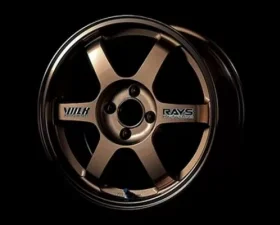Save with our Tax Refund Sale - Shop Now
Volk Racing TE37 Wheels

Why Choose Volk Racing TE37 Wheels?
The Volk Racing TE37 is arguably one of the most popular wheels in the entire automotive aftermarket. They've been popular for decades and even with minor design changes, the TE37 continues to be one of the most popular wheels out there. They're incredibly popular for JDM vehicles, but it's not uncommon to see them on European or American vehicles as well.
Lightweight wheels are nothing unusual. If that’s all you care about, you’ve got plenty to chose from. The TE37 adds two other important elements, though: strength and rigidity. Together, those characteristics are what make a wheel like this so distinctive. In terms of racing, it’s a matchup that’s essential: the more rigid the wheel, the better torque can be transmitted to the tires and, ultimately, to the road. And, well, strong wheels, they don’t break.
A Very Short History
Volk’s TE37 dates back to 1996, when Japanese wheel manufacturer RAYS first released its one-piece forged aluminum wheel to consumers. Once considered a luxury reserved for the likes of formula cars that you can’t afford, RAYS helped introduce forged wheel technology to people like us with its Volk Racing line. And since 1996, the TE37 has been manufactured solely in Japan. In fact, Rays’ entire operation is based out of Japan, where all of the company’s design, manufacturing and marketing efforts are conducted, which ensures the sort of quality RAYS expects, and that JDM fanboys, like us here, can sleep soundly every night.
Analysis
Before anything can be developed, RAYS makes use of complicated FEA (Finite Element Analysis) software to determine whether or not a particular design doesn’t just look good but is structurally sound. On the road, a wheel’s outer rim undergoes significant amounts of stress during cornering while the inner portion is critical to the wheel’s ability to maintain appropriate tire grip. FEA allows engineers to simulate stressful situations and determine where potential weak points may occur before manufacturing a single rim.
Rays' Special Aluminum Blend
Part of their popularity stems from their incredibly unique construction method. The base material used to construct a TE37 is Rays Engineering's special A6061-T6 blend is 100% aluminum, where many other "aluminum" wheels are only 80% aluminum. The special blend isn't easily replicated and it's something very few companies haven???t been able to replicate.
The special 100% aluminum blend makes the material lighter and stronger, allowing the wheel to resist deformation under heavy loads such as rough roads or high g-force corning on a race track. The special blend also helps with thermal conductivity, ultimately helping your brakes stay within their ideal operating temperature on track.
The TE37 is a forged wheel, which starts its life as a chunk of aluminum which is subjected to high temperatures and high pressures to form a more dense and compressed piece of aluminum. Forging simply increases the strength of the material, meaning less material is required to reach the target strength level, ultimately creating a lighter and stronger wheel.
The Forging Process
What makes the TE37's stronger than the large majority of forged wheels is their unique forging process. For nearly all forged wheels, the desired wheel shape is cut from a large piece of forged aluminum. This process is known as machine forging.
Rays Engineering uses a unique process known as mold-form-forging, where the shape of the wheel is created during the forging process, rather than being cut out from a chunk of forged aluminum.
The reason for the special forging process is to avoid disrupting the flow of the grain. Every piece of forged aluminum has a grain just like a piece of wood. With machine forging, the grain doesn't properly flow through the shape of the wheel, since the flow of the grain is created during the forging process.
With mold-form-forging. The grain of the forged aluminum flows with the shape of the wheel since the shape is created during the forging process rather than after the forging process. The result is further improved strength compared to machine forged wheels.
Like lumber, metal has its own grain, also known as its fiber flow. The finer the grain, the higher quality the material is. And the better that grain follows the shape of its part, the stronger the part will be. For example, when machine forging, the metal’s grain is preset, typically traversing side to side, resulting in a wheel in which its grain may flow any number of directions once cut. Mold-form forging shapes the wheel through compression using a series of dies so that its grain flows according to the shape of the wheel’s rim and spokes, allowing it to remain continuous, resulting in an impressive strength-to-weight ratio. In other words, RAYS is able to take a hunk of aluminum and shape it into what roughly looks like a TE37 without any cutting. They place a significant emphasis on the metal’s grain and claims for it being the most critical element of a properly forged wheel.
To put it simply, Ray's takes a chunk of aluminum and forge it into the shape of a TE37 with zero cutting, allowing the metal grain to flow with the shape of the wheel.
Special Machinery
Part of what allows Rays Engineering to accomplish this special construction process is its special machinery. Their special RM8000 die forging machine is the strongest forging machine in Japan and one of the strongest in the entire world. This machine applies up to 10,000 tons of force to the material to achieve the target shape, density, and grain flow.
How it's Made
The process of making a Volk Racing wheel starts with a raw aluminum disc which is heated to nearly 900f. The aluminum disc is then compressed and forced into the rough shape of the desired wheel design. The next step involves more specific forging to create the fine details of the wheel through forging rather than cutting.
With the rough shape of the wheel created from an aluminum disc, the RM8000 machine stretches the rim with up to 10,000 tons of force. Following the rim stretching process, the area between the spokes is punched out and then another process creates the inner rim.
With the shape of the wheel creating, a special heat-treating process is used to finalize the forging. With the forging complete, the wheel is machined to create the fine details, lug pattern, valve stem hole, and any weight-reducing cuts. Last, a shot-peening process is used to further increase strength before the wheel is painted.
The Ultimate Test
Once manufactured, a number of tests are performed to ensure that when your 240SX ends up on the side of the road, it doesn’t have anything to do with your wheels. First, one million radial load fatigue testing rotations ensure wheel strength and endurance. Here, the wheel is fixed to a hub and spun with bending stresses applied to discover potential cracking or deformation. Next, a 13-degree impact test determines proper air retention and confirms overall wheel strength. Engineers drop the wheel and tire assembly from a fixed height and specified angle to simulate curb contact. A similar 90-degree impact test is then conducted, which determines whether or not damage may occur due to potholes or other types of road impact, and gives engineers another chance to chuck wheels into the air. Finally, a drum endurance test ensures the durability of the rim itself. Again, the assembly is mounted to a jig where a minimum of 500,000 rotations are applied. RAYS even test its wheel coatings, exposing them to ultraviolet radiation as well as a series of procedures to ensure against peeling, chipping or scratching. Although JWL (Japan Light Alloy Wheel Standards) calls for minimum standards by which all of these tests must be conducted, RAYS has developed its own criteria (JWL+ R), that are more strict for the high-performance use most of its wheels are subjected to.
TE37 vs TE37SL
Two of the most popular version of the TE37 are the original TE37 and the TE37SL. Both wheels are incredibly similar and upon first glance look identical other than available finishes, but there are a few key differences between both wheels.
The "SL" in "TE37SL" stands for "Super Lap". Rays Engineering specifically designed the TE37SL for track use and put an emphasis on reducing weight as much as possible. They achieved this by putting small cuts on the back of the spokes to reduce weight and machining out the area where the center cap would be. The result is a weight reduction of up to 400 grams.
Vivid Racing carries every Volk Racing wheel currently available, including the TE37, TE37SL, TE37 Saga, TE37 Ultra, CE28, CE28N, CE28SL, G50, G25, and many more!
Other Volk Racing TE37 Variants:
- TE37
- TE37 Gravel
- TE37 KCR
- TE37 KCR BZ Edition
- TE37 Large PCD Progressive
- TE37 Saga S-plus
- TE37 Saga SL
- TE37 SL
- TE37 SL Black Edition II
- TE37 SL Black Edition III
- TE37 Sonic
- TE37 Sonic Club Racer
- TE37 Sonic MD/B
- TE37 Sonic SL
- TE37 Ultra
- TE37 Ultra Large PCD
- TE37 Ultra M-Spec
- TE37 Ultra Tourer
- TE37 Ultra Track Edition
- TE37 Ultra Track Edition II
- TE37SB
- TE37SB Tourer
- TE37V
- TE37V 10th Anniversary Edition
- TE37V Mark-II
- TE37V SL 2021 Limited
- TE37XT
- TE37XT M-Spec

.jpeg?q=90&p=thumb&w=200&h=200)
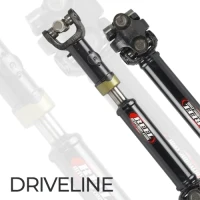
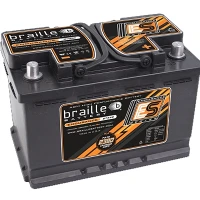





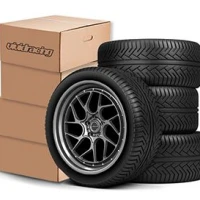

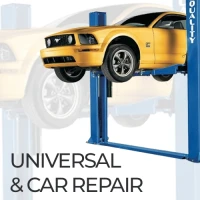

.jpeg?q=90&p=thumb&w=40&h=40) Brakes
Brakes  Driveline
Driveline  Electronics
Electronics  Handlebars & Controls
Handlebars & Controls  Package Deals
Package Deals  Wheel Accessories
Wheel Accessories  Wheels by Vehicle
Wheels by Vehicle  Tools and Maintenance
Tools and Maintenance  Universal & Repair
Universal & Repair  Vivid Racing Gear
Vivid Racing Gear 